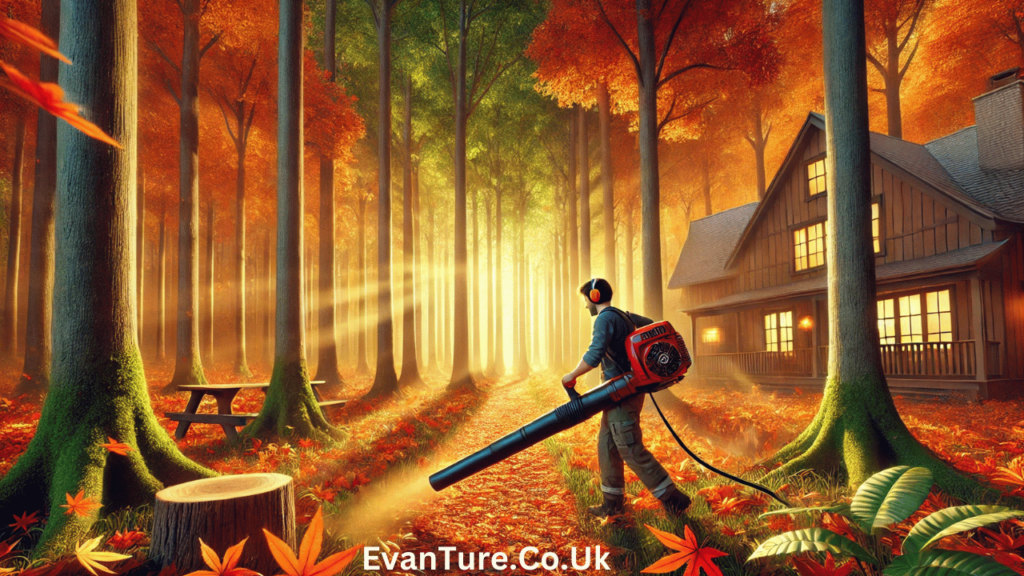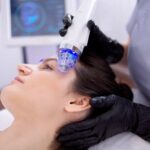Eustachian Tube Dysfunction (ETD) is a common condition that affects the small passageways connecting the middle ear to the back of the throat. These tubes regulate air pressure, drain fluid, and protect the ears from infections. When they don’t function properly, it can lead to symptoms such as ear pain, a feeling of fullness, tinnitus, or even hearing loss. Many individuals with ETD are cautious about activities that might exacerbate their condition, particularly those involving noise or pressure changes. This brings us to an important question: Can you use a leaf blower wit Heusphatian tube dysfunction“?
In this article, we will delve into the risks and precautions associated with using leaf blowers if you have ETD, offer alternative solutions for yard maintenance, and provide tips to manage your condition effectively.
Understanding the Impact of Noise on Eustachian Tube Dysfunction
Leaf blowers are notorious for their high noise levels, which often range between 85 to 100 decibels. For individuals with ETD, exposure to such loud sounds can be particularly concerning. Prolonged or repeated exposure to loud noises may worsen tinnitus—a common symptom of ETD characterized by ringing or buzzing in the ears.
Why Noise Matters
- Hearing Sensitivity: ETD can make your ears more sensitive to sound due to the inability to regulate pressure effectively. This heightened sensitivity can result in discomfort or even pain when exposed to loud noises like those produced by leaf blowers.
- Tinnitus Aggravation: If you already experience tinnitus, using a leaf blower can intensify this symptom, making it more bothersome and harder to ignore.
- Hearing Damage: Even for those without ETD, consistent exposure to high-decibel noise can lead to permanent hearing damage. For individuals with ETD, the risk might be even greater.
How to Minimize Noise Impact
If you must use a leaf blower despite having ETD, consider these tips:
- Invest in noise-canceling ear protection designed to reduce sound exposure.
- Opt for leaf blowers labeled as “quiet” models, which typically produce lower decibel levels.
- Limit your exposure by using the blower for shorter periods and taking regular breaks.
Air Pressure and Its Effects on Eustachian Tube Dysfunction
In addition to noise, leaf blowers generate strong air currents that create localized pressure changes. For individuals with ETD, these pressure fluctuations can make it harder for the Eustachian tubes to function properly.
Pressure Challenges
- Equalization Difficulties: ETD impairs your ability to equalize ear pressure, which can result in pain or discomfort when exposed to rapid air pressure changes.
- Risk of Barotrauma: Prolonged use of leaf blowers may increase the risk of barotrauma—a condition caused by pressure changes that can damage the eardrum or inner ear.
Precautions for Managing Pressure
To minimize the risks associated with air pressure:
- Avoid standing directly in the path of the air stream generated by the blower.
- Use the blower in open areas to reduce the intensity of localized pressure changes.
- Monitor your symptoms closely during and after use. If you experience increased discomfort, stop immediately.
Alternatives to Using a Leaf Blower with ETD
For individuals with Eustachian Tube Dysfunction, exploring quieter and less disruptive options for yard maintenance can be a practical solution. Here are some alternatives to consider:
Manual Raking
Raking leaves by hand is a noise-free and pressure-free option. While it requires more physical effort, it eliminates the risks associated with leaf blowers.
Electric Lawn Vacuums
Electric lawn vacuums are typically quieter than leaf blowers and may produce less intense air currents. These tools can effectively collect leaves without causing as much noise or pressure disturbance.
Professional Yard Services
Hiring a professional landscaping or yard maintenance service is another alternative. This option allows you to avoid using potentially harmful equipment while ensuring your yard is well-maintained.
Tips for Managing Eustachian Tube Dysfunction During Yard Work
Managing ETD effectively is crucial, especially if you need to engage in activities that could affect your condition. Here are some general tips to keep in mind:
Protect Your Ears
- Always wear ear protection when engaging in loud activities.
- Consider using specially designed earplugs that regulate pressure while protecting your hearing.
Stay Hydrated
Dehydration can worsen ETD symptoms. Drink plenty of water before and during yard work to stay hydrated and support overall ear health.
Use Decongestants or Nasal Sprays
If your ETD is caused by nasal congestion, using a decongestant or saline nasal spray before yard work can help improve Eustachian tube function.
Take Breaks
Avoid prolonged exposure to noise or pressure changes. Take frequent breaks to give your ears time to recover.
Consult Your Doctor
If you’re unsure whether a particular activity is safe for your condition, consult your healthcare provider for personalized advice.
FAQs About Using a Leaf Blower with Eustachian Tube Dysfunction
1. Can using a leaf blower worsen my Eustachian Tube Dysfunction? Yes, the loud noise and pressure changes associated with leaf blowers can aggravate ETD symptoms such as tinnitus, ear pain, and pressure imbalances.
2. What precautions should I take if I use a leaf blower with ETD? Wear noise-canceling ear protection, use the blower in short bursts, and avoid standing in the direct path of the air stream.
3. Are there quieter alternatives to leaf blowers for yard work? Yes, manual raking and electric lawn vacuums are excellent alternatives that produce less noise and pressure.
4. Can using ear protection help with ETD while operating a leaf blower? Yes, high-quality noise-canceling ear protection can reduce the risk of noise-induced hearing damage and discomfort.
5. Should I consult a doctor before using a leaf blower if I have ETD? It is advisable to consult a healthcare professional for personalized guidance, especially if you’re unsure about the potential impact on your condition.
Conclusion
So, can you use a leaf blower wit Heusphatian tube dysfunction? While it is possible, it not without risks. The loud noise and pressure fluctuations generated by leaf blowers can exacerbate ETD symptoms, making it essential to take proper precautions. By wearing noise-canceling ear protection, limiting usage, and exploring quieter alternatives like raking or electric lawn vacuums, you can maintain your yard without compromising your ear health. Ultimately, consulting with a healthcare professional is the best way to determine the safest approach based on your specific condition.
Throughout this article, the question “Can you use a leaf blower wit Heusphatian tube dysfunction” was addressed in detail, offering insights into the risks and solutions. This helps individuals understand the precautions required for safe yard maintenance.
Read More: What Lessons Can You Learn from Jillian Parry Success Story?







